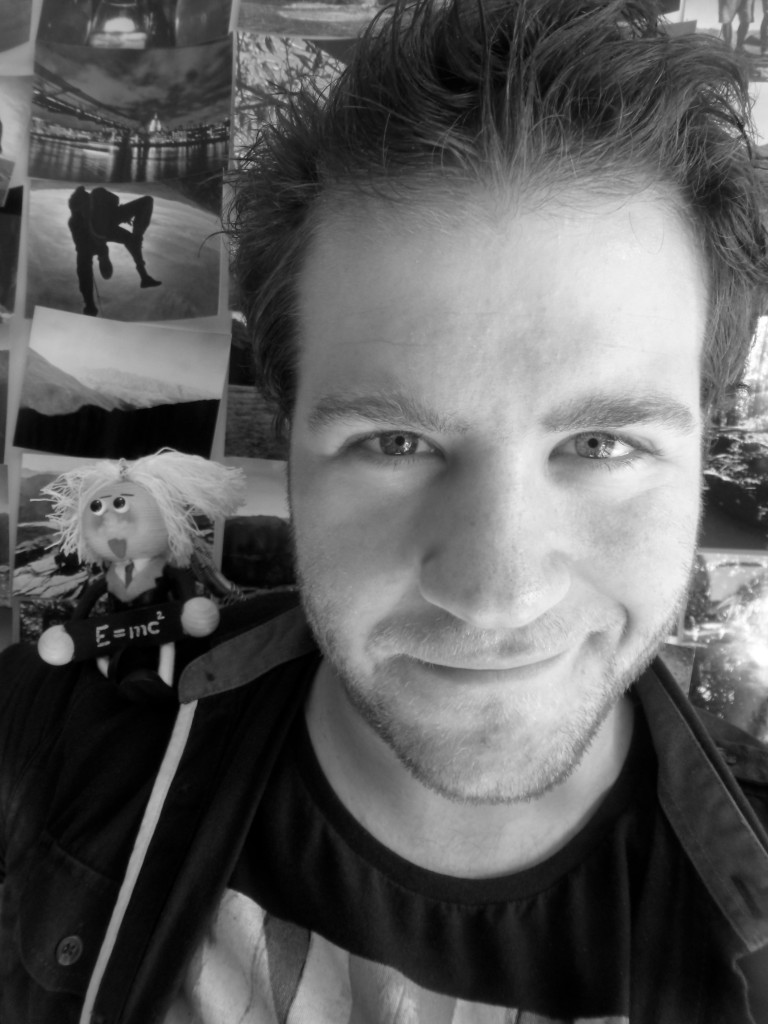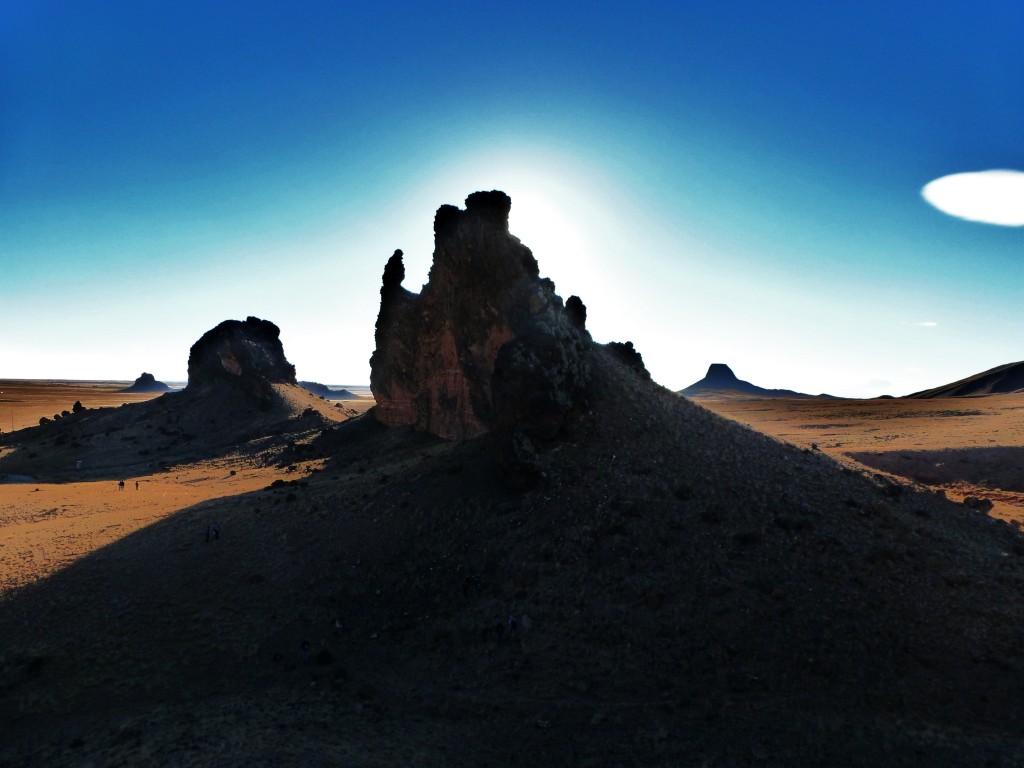This month in GeoTalk, we spoke to Robin Andrews, a PhD candidate at the University of Otago, New Zealand, who takes us through the explosive aspects of one of Geology’s most thrilling disciplines – volcanology.
First, could you introduce yourself and let us know a little about your work and what drew you to volcanology?
Ah, introductions! Well, I’m Robin Andrews, a British postgraduate volcanology student currently based in New Zealand. I’m listed as an experimental volcanologist – apparently with an emphasis on the mental, according to some colleagues of mine. When I’m normally asked how I got into volcanology, I give a similar answer to the question of why I got into science in the first place. As a child, I often conducted scientific experiments in my home without the permission of my parents: melting all of the cutlery in the kitchen drawer using a lot of batteries was a highlight. The moment I found out that we are all the bottled, biological results of the accumulation of stardust, billions of years old, I knew I wanted to study something that painted such an epic picture in everyone’s minds in an instant. Volcanoes fit the brief nicely: no inner child can watch them erupt and not be bowled over in awe.
Nowadays, I absolutely love studying volcanic systems that could be works of natural art. My dream is to head to Iceland and use a snowmobile to circle around the eruption column of one of their very active volcanoes. At the time of writing, I spend most of my academic time setting off controlled explosions – both large and small – and study the dynamics of them through a variety of instrumentation; I use this data to make comparisons to explosive volcanic systems that would otherwise kill me if I stood by and observed them in person.

Robin Andrews. “Equipped with his five senses, man explores the universe around him and calls the adventure Science.” – Edwin Hubble.
My PhD is very satisfyingly unorthodox. I’m studying maar-diatreme volcanic systems, which are a poorly understood and badly defined type of volcanic system. Unlike most volcanic eruptions, which involve continuous eruptions, these systems are blasted into existence by one or multiple discontinuous blasts. As a consequence of this, there are many comparisons made to military and nuclear explosions, so, rather excitingly, for my PhD, I get to blow up a lot of things, from small gas blasts in a laboratory in Germany to large-scale TNT detonations in a field somewhere in the United States, all filmed on extremely high-speed cameras. These experiments have actually revealed a physical mechanism in explosive volcanology – and in crater-forming military explosions – that has not be seen before, thanks to the equipment used, a little bit of physics, and a tiny sprinkling of mathematics, it has been quantified for the first time, and a few journal papers I’m writing now hope to compare these results to both field geology examples and military tests. A recent collaboration with some rather brilliant scientists in the United States has also started the wheels turning on a project involving the volcanism of Io, which aims to investigate whether the aforementioned physical phenomenon could apply to the innermost Galilean moon of Jupiter.
Your PhD is focused on the dynamics of the 1886 Rotomahana eruption – what do we know already and how does your work feed into this?
We know that the eruption was rather unusual, in that the eruption ejecta produced by the roughly synchronous reactions of both the subaqueous magmatic system – which formed numerous gigantic depression craters – and the large stratovolcano nearby were pretty much indistinguishable. Apart from that, the actual mechanism for the eruption of the underwater sections, both thermally and mechanically, are almost entirely hypothetical. We know from very recent experiments that just adding magma to cold water does not result in any sort of Molten Fuel Coolant Interaction-type explosive release of energy: in fact, almost a third of the energy is released as infrasound. I’m currently focused on the mechanics of the eruption rather than the (far more expensive) thermal system potentially operating in such systems, but I’m hoping to move onto the latter soon. My work was initially focused on just this eruption, but its scope has since expanded dramatically as a consequence of the success of the analogue experiments I have been conducting.
Studying volcanoes can be a risky business – when you’re in the field – how can we use laboratory analogues to better understand them?
Half the fun of studying volcanoes is in the risk! Anything that resembles a scene from an Indiana Jones film or an episode of Doctor Who is fine with me. Nevertheless, it is true that volcanoes are particularly dangerous, and many times, tragically so. As aforementioned, they tend to erupt spectacularly and suddenly just once, often forming as a result of at least one discrete blast. Standing too close to these potential eruption sites – which in this case are incredibly difficult to identify pre-eruption – is almost always a fatal decision. The analogue experiments are a far safer way of testing out theories, especially for maar-diatreme systems. One major benefit of my experiments, for example, is being able to see the manufactured eruptions in “cross-section”; this is not exactly possible to view during actual eruptions.

Magnificent exhumed volcanic structures of the Hopi Buttes volcanic field in Arizona. Credit: Robin Andrews.
But you’re not in the lab all the time – when you’re out, what do you do to share your science with others not in your field?
The great thing is that I’m rarely in the lab, which is partly the fun of studying volcanology: it’s a very outdoors-based, physically active science. As for sharing my science with other people not in my field, this can be broken down into two categories: other scientists, and non-scientists. Volcanology recently came second in a survey of British schoolchildren when they were asked what their ideal career would be – something no doubt (and thankfully) provoked by the (at the time) eruption of that most unpronounceable Icelandic volcano. It’s quite the visually exhilarating science, and it proves fairly easy to convince both other scientists and the general public that it’s a good science to peruse, or to regale others with both academic and anecdotal stories. In the long term, I’d love to communicate science to the masses, but for now, I’m keen on spreading the word to the general public through storytelling. As for other scientists, this year I’m going to several conferences to present the ever-so-slightly cool footage of my experiments – and my findings – and spread the word through academic portals and publishing. The hope is that when I become an established (and hopefully respected!) scientist with a flair for the theatrical, the science communication to the general public will follow. I want to become a good academic first though.
Do you have any advice for budding volcanologists?
Absolutely, and I will phrase it in the following way. I had a conversation with someone wherein the topic of bottled lightning came up. Was it possible to capture volcanic lightning, a strange, striking phenomenon, in a bottle? Of course, the answer right now is no, but consider this: what else is a photographic print if not the bottled, frozen result of a camera capturing and storing light? Scientists set fire to the world in an unstoppable conflagration of knowledge and understanding that simply cannot be matched, with the message underscoring each new discovery being one of perpetual inquiry: the more we know, the more we don’t know, a combination of the laws of nature and human ingenuity. Scientists challenge the definition of the word “impossible”, and volcanologists are a small, but visually resplendent and indubitably exciting part of that. If you enjoy taking risks, seeing otherworldly sights, and travelling to the most beautiful parts of the planet, then get stuck into your physics, chemistry, and geology, and most importantly of all, never stop asking questions. Remain perpetually curious, and be impatient.
So, what next?
Well, it’s a busy year for me: I’ve got a lot of science to get accepted into the literature, a thesis to write, more of the world to see, a good few conferences to go to, and a lot of photography and writing to publish alongside all this wonderful madness. Constantly putting one foot in front of the other, academically and literally.

Peering through a dragon’s spine-style volcanic dyke into the exhumed volcanic field ahead. Credit: Robin Andrews.
If you’d like to suggest a scientist for an interview, please contact Sara Mynott.
